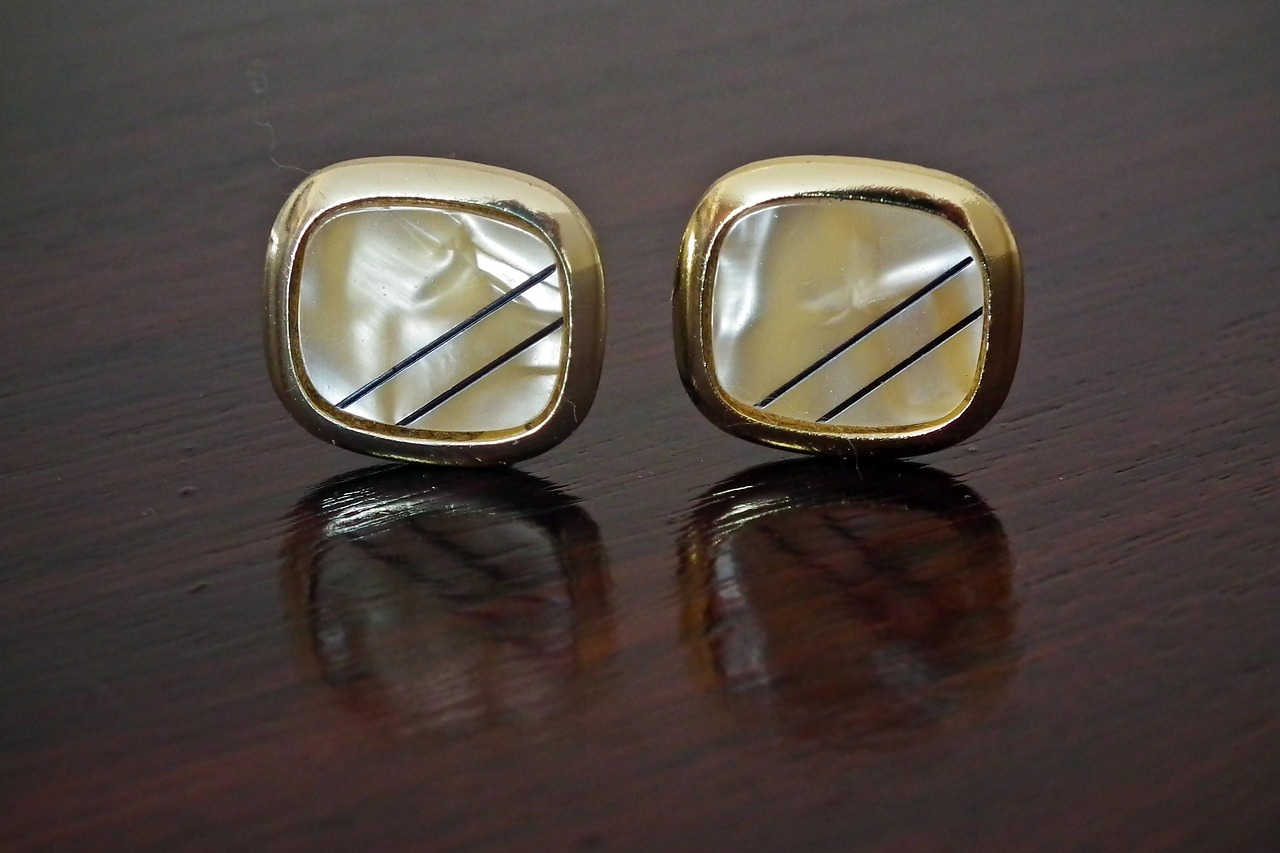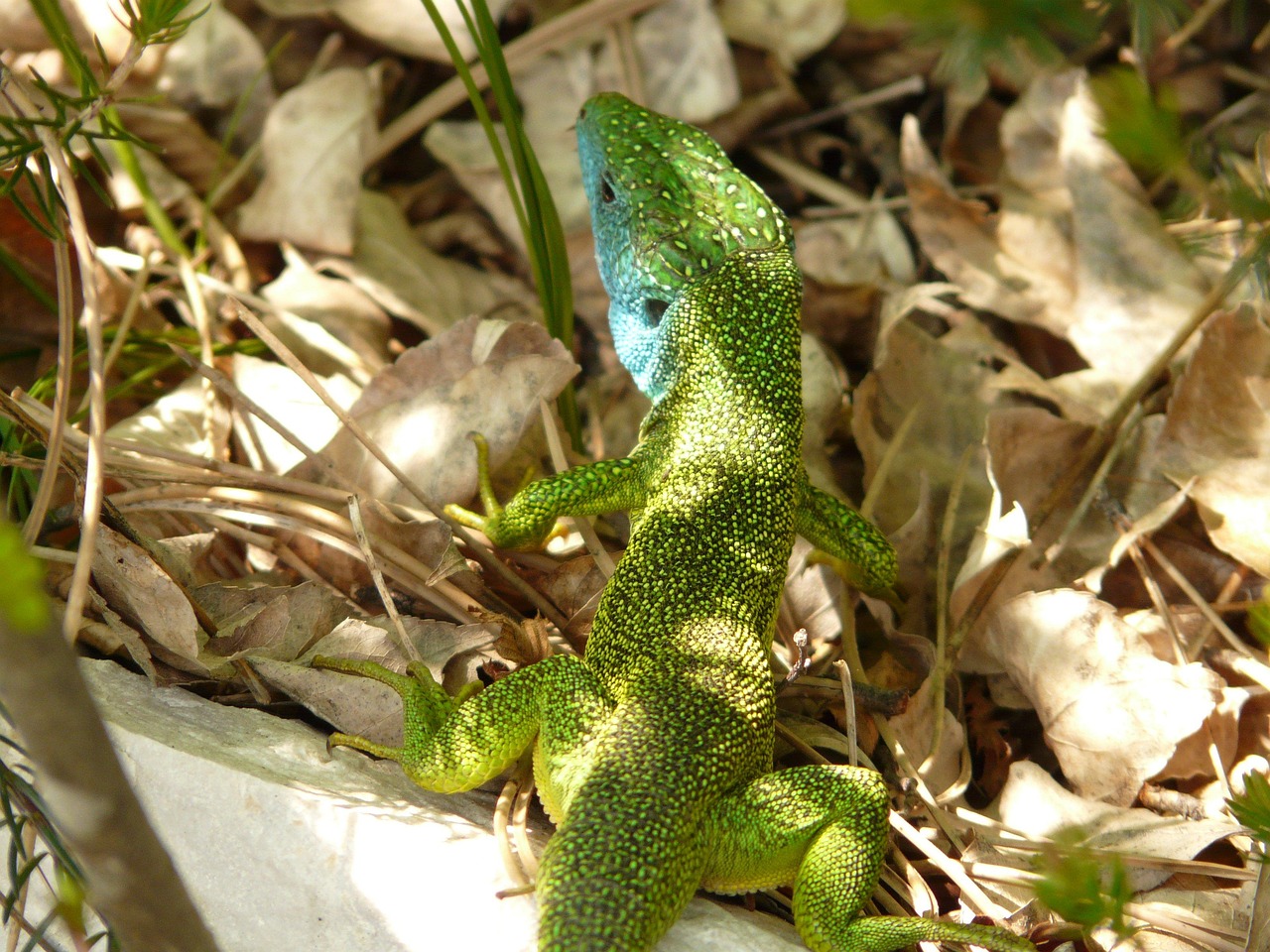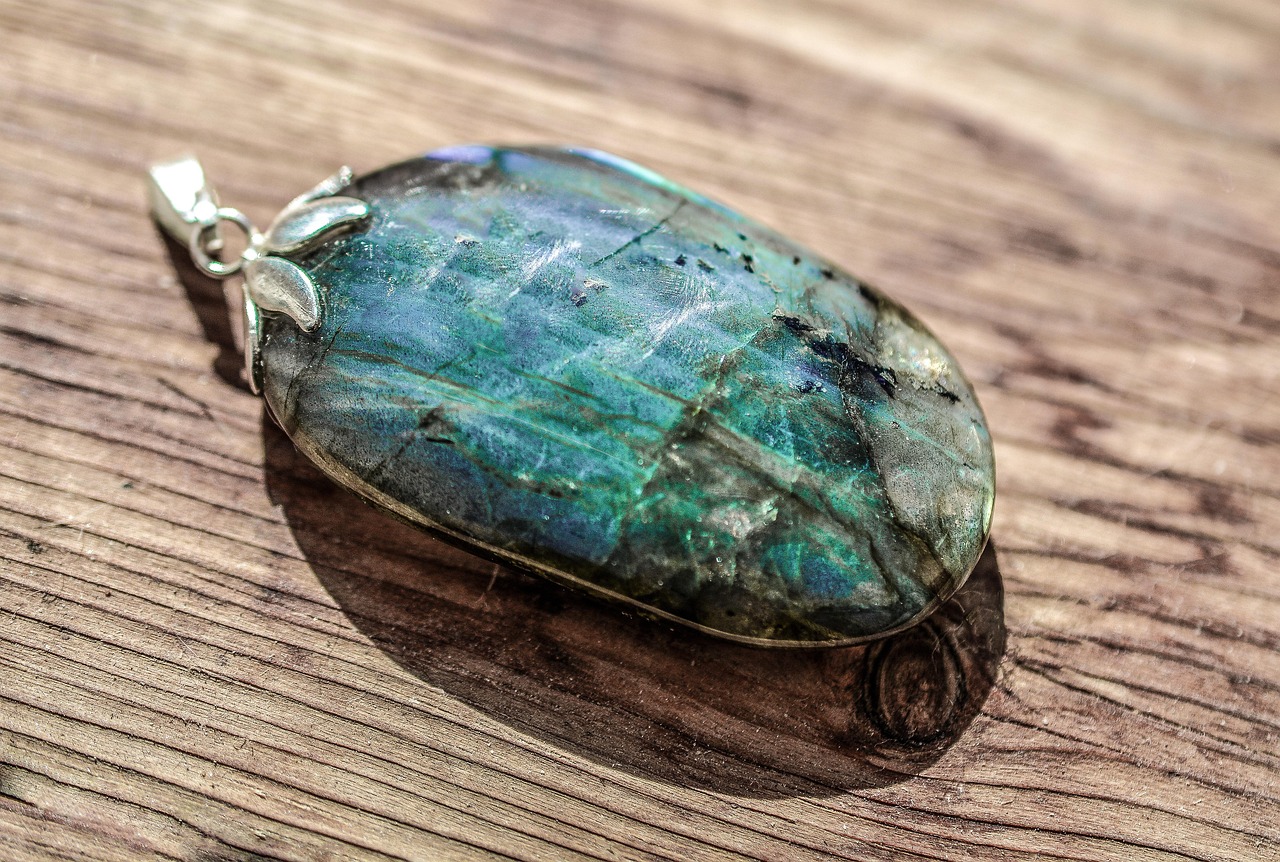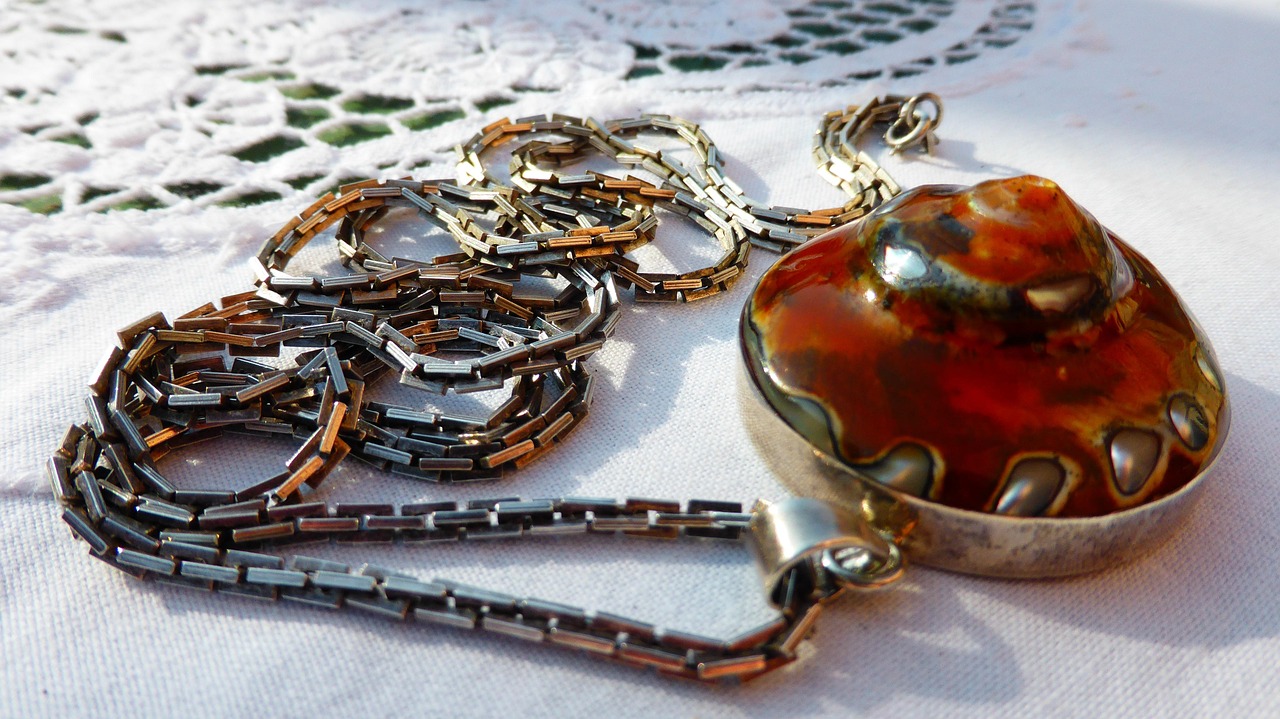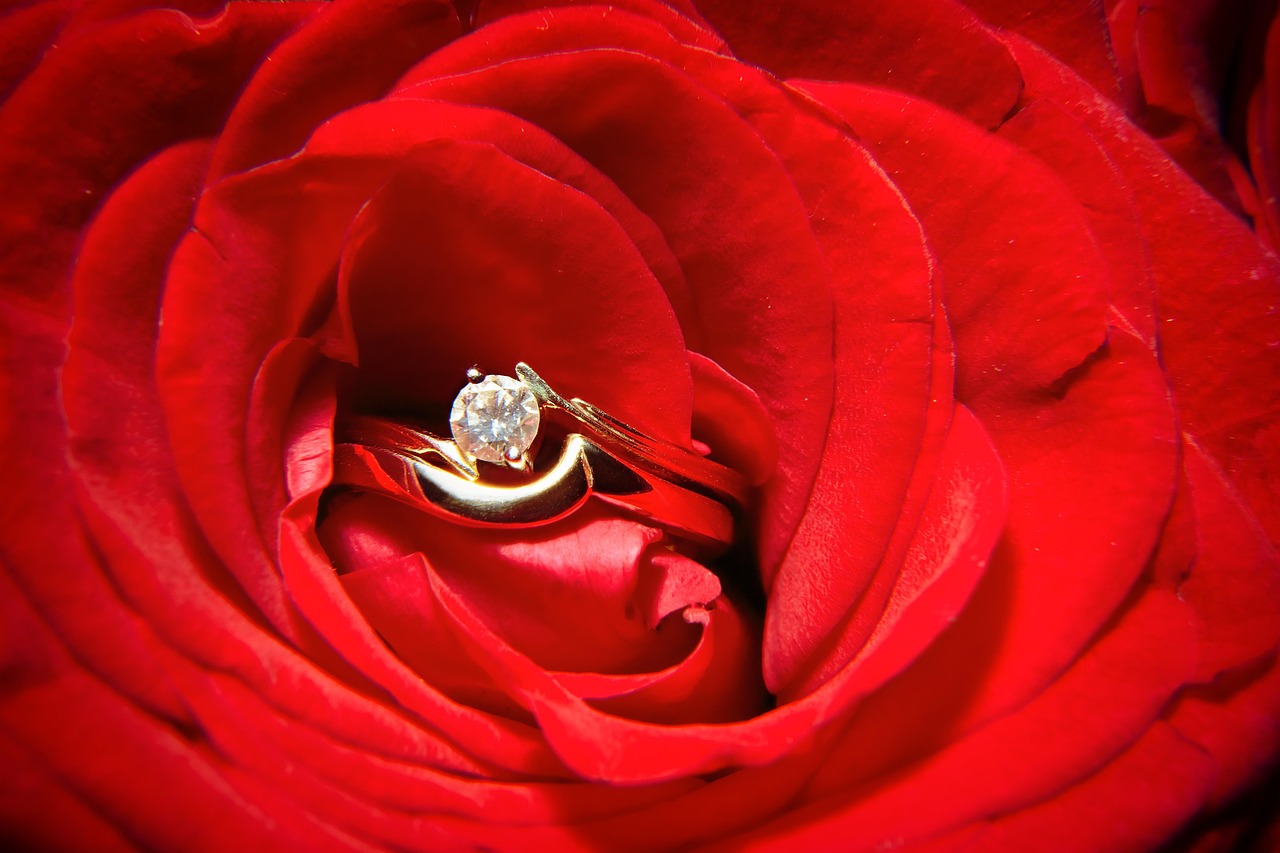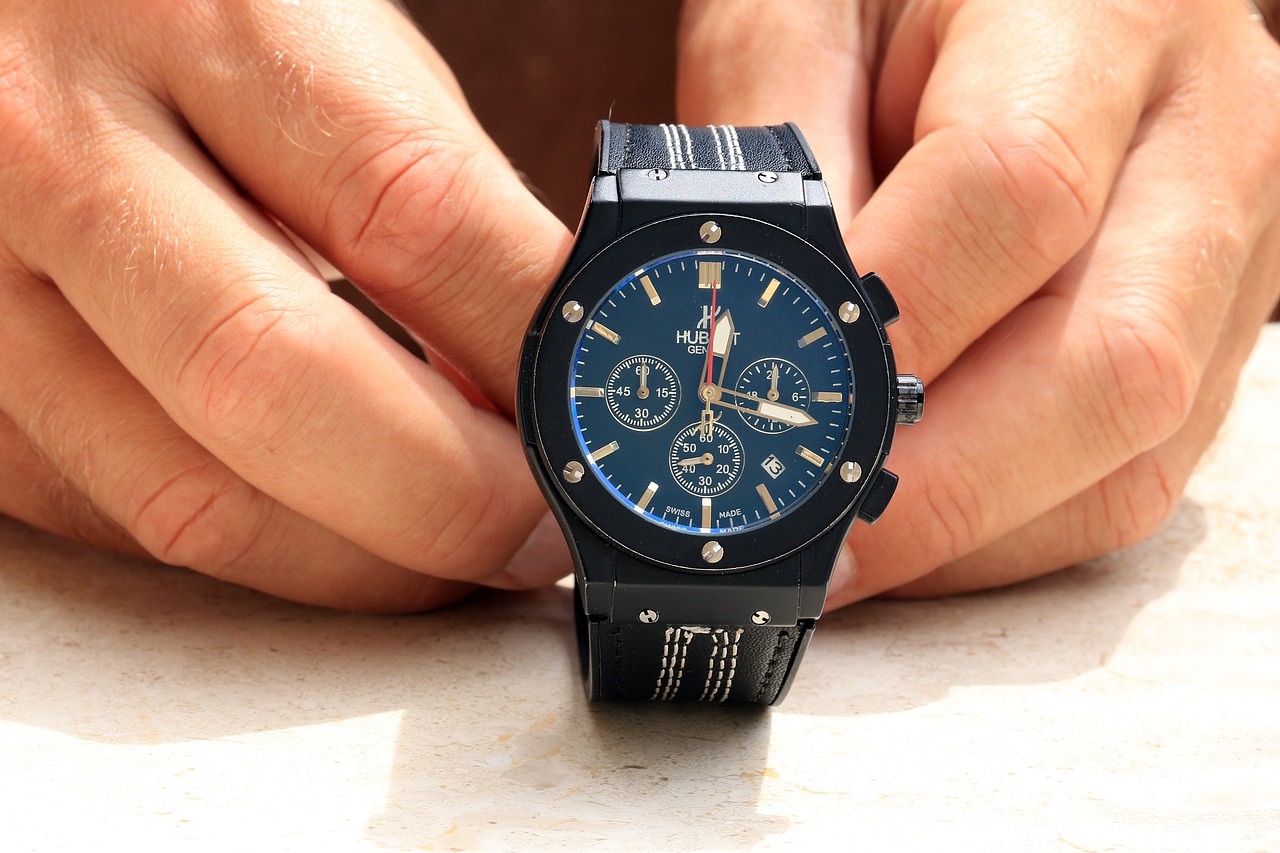This article explores the reasons why moissanite is becoming a popular alternative to diamonds, examining its qualities, benefits, and considerations for consumers looking for a stunning gemstone.
What Is Moissanite?
Moissanite is a lab-created gemstone that closely resembles diamonds. Discovered in 1893 by Henri Moissan, it has gained popularity due to its exceptional brilliance and affordability compared to natural diamonds. Unlike diamonds, which are mined from the earth, moissanite is synthesized in laboratories, making it an ethical and environmentally friendly choice.
How Does Moissanite Compare to Diamonds?
Understanding the differences in composition, hardness, and brilliance between moissanite and diamonds helps consumers make informed decisions when choosing a gemstone for jewelry.
- Composition and Origin: Moissanite is made from silicon carbide, whereas diamonds are composed of carbon. This fundamental difference affects their appearance and pricing.
- Natural vs. Lab-Created: Moissanite’s lab-created nature ensures ethical sourcing and minimizes environmental impact, a significant consideration for many consumers.
- Brilliance and Fire: Moissanite exhibits a higher refractive index than diamonds, resulting in greater brilliance and fire, often making it appear more vibrant.
Durability and Hardness
Moissanite ranks 9.25 on the Mohs scale of hardness, making it nearly as durable as diamonds, which score a perfect 10. This durability ensures that moissanite can withstand everyday wear, making it an excellent choice for engagement rings and other jewelry.
What Are the Cost Benefits of Choosing Moissanite?
One of the most significant advantages of moissanite is its affordability. Understanding the cost differences can help consumers make budget-friendly choices without sacrificing beauty.
- Price Comparison with Diamonds: Moissanite typically costs 20-40% less than diamonds of similar size and quality, making it an attractive option for budget-conscious consumers.
- Long-Term Value Considerations: While diamonds often hold their value well, moissanite’s lower initial cost can be appealing for those looking for a beautiful yet economical choice.
Are There Any Ethical Considerations?
Ethical sourcing is a crucial factor for many consumers. Moissanite’s lab-created nature eliminates concerns related to conflict diamonds and unethical mining practices.
- Environmental Impact: The production of moissanite has a lower environmental footprint compared to diamond mining, which can be damaging to ecosystems and local communities.
- Supporting Ethical Practices: Choosing moissanite promotes sustainable practices, as it encourages the use of lab-created gemstones over mined alternatives.
What Are the Popular Uses for Moissanite?
Moissanite is not only used in engagement rings but also in various types of jewelry, showcasing its versatility.
- Engagement Rings and Wedding Bands: Many couples are opting for moissanite engagement rings due to their beauty and affordability, making them a popular choice for modern weddings.
- Fashion Jewelry and Custom Designs: Moissanite is increasingly used in fashion jewelry, allowing for creative designs that appeal to a wide range of personal styles.
How to Care for Moissanite Jewelry?
Proper care can extend the life and beauty of moissanite jewelry. Understanding cleaning and maintenance tips is essential for preserving its brilliance.
- Cleaning Techniques: Moissanite can be cleaned using mild soap and water. Regular cleaning helps maintain its sparkle and removes any buildup from daily wear.
- Storage Recommendations: Storing moissanite jewelry separately from other pieces can prevent scratches and damage, ensuring it remains in pristine condition for years to come.
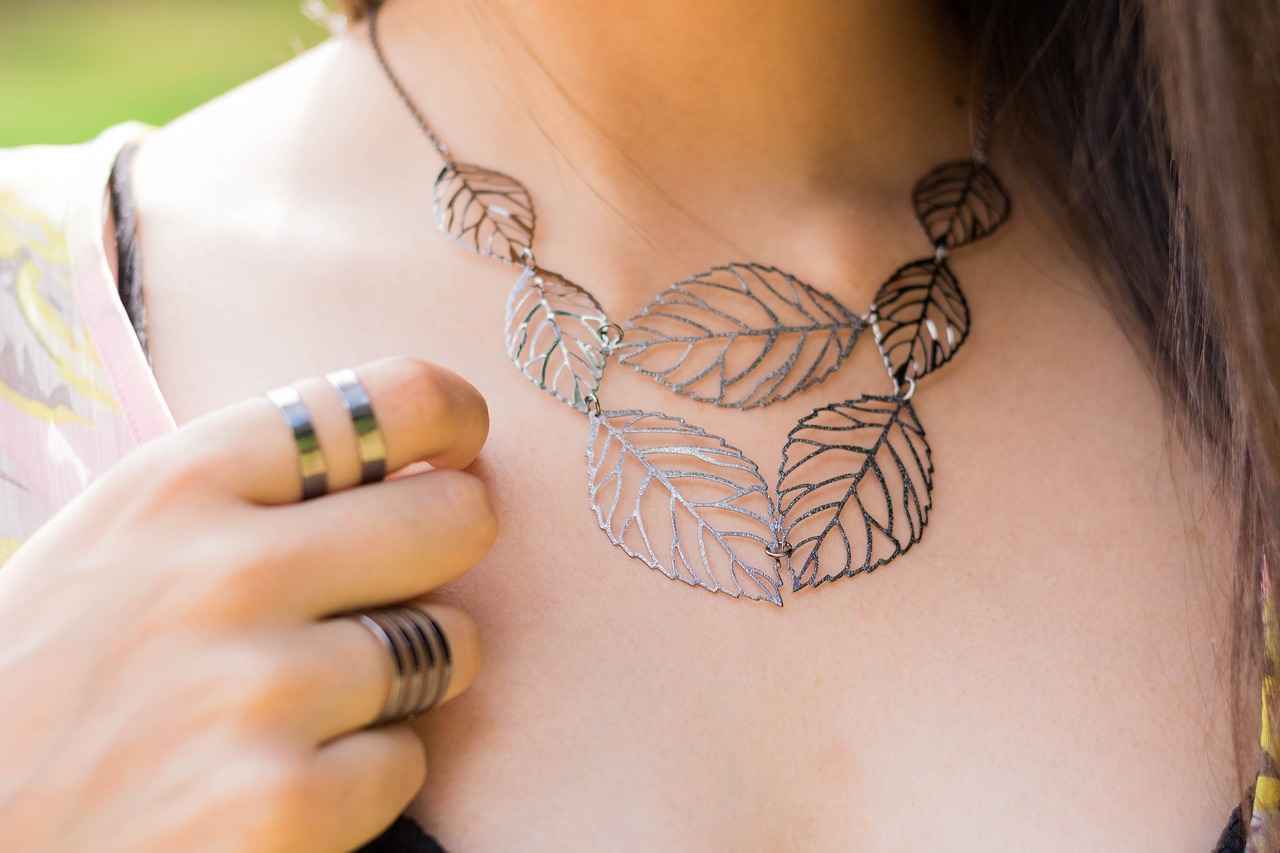
What Is Moissanite?
Moissanite is an extraordinary gemstone that has garnered attention in the jewelry world for its stunning beauty and remarkable properties. First discovered in 1893 by French chemist Henri Moissan, this gemstone was initially found in a meteorite. However, due to its rarity in nature, most moissanite available today is created in controlled laboratory environments. This innovative approach not only makes moissanite more accessible but also significantly enhances its appeal among consumers.
Moissanite is primarily composed of silicon carbide, which gives it unique characteristics that set it apart from traditional gemstones like diamonds. One of the most notable features of moissanite is its brilliance. With a higher refractive index than diamonds, moissanite exhibits an exceptional sparkle that many find captivating. This brilliance is often perceived as more vibrant and lively than that of diamonds, making moissanite a favored choice for various types of jewelry.
When it comes to durability, moissanite stands out with a hardness rating of 9.25 on the Mohs scale, just below diamonds, which score a perfect 10. This impressive hardness ensures that moissanite can withstand everyday wear, making it an ideal option for rings and other jewelry pieces that are frequently worn. Its resilience means that it can maintain its beauty over time, even in the face of daily activities.
One of the most compelling reasons to consider moissanite over diamonds is its affordability. Typically, moissanite costs 20-40% less than diamonds of comparable size and quality. This significant price difference allows consumers to purchase larger or higher-quality stones without breaking the bank. For those who prioritize budget without compromising on beauty, moissanite presents an attractive alternative.
In today’s world, ethical sourcing is a growing concern for many consumers. Moissanite’s lab-created nature alleviates worries associated with conflict diamonds and unethical mining practices. By choosing moissanite, consumers can feel confident that their purchase supports ethical practices and sustainable methods of gemstone production.
The environmental footprint of moissanite is significantly lower than that of mined diamonds. Traditional diamond mining can lead to extensive ecological damage, including habitat destruction and pollution. In contrast, the lab-created process of moissanite production minimizes these negative impacts, making it a more environmentally friendly option.
Moissanite is not limited to engagement rings; it is also increasingly popular in various types of jewelry, including earrings, pendants, and bracelets. Its versatility allows designers to create stunning pieces that appeal to a wide range of tastes and styles. Many couples are now opting for moissanite engagement rings due to their beauty and affordability, making them a popular choice for modern weddings.
To ensure that moissanite jewelry retains its brilliance, proper care is essential. Cleaning can be easily accomplished using a mixture of mild soap and warm water. Regular cleaning helps to remove dirt and oils that can accumulate over time. Additionally, storing moissanite jewelry separately from other pieces can prevent scratches and damage, ensuring that it remains in pristine condition.
In summary, moissanite offers a stunning, ethical, and affordable alternative to diamonds. With its remarkable properties and growing popularity, it is no wonder that many consumers are choosing moissanite for their jewelry needs.
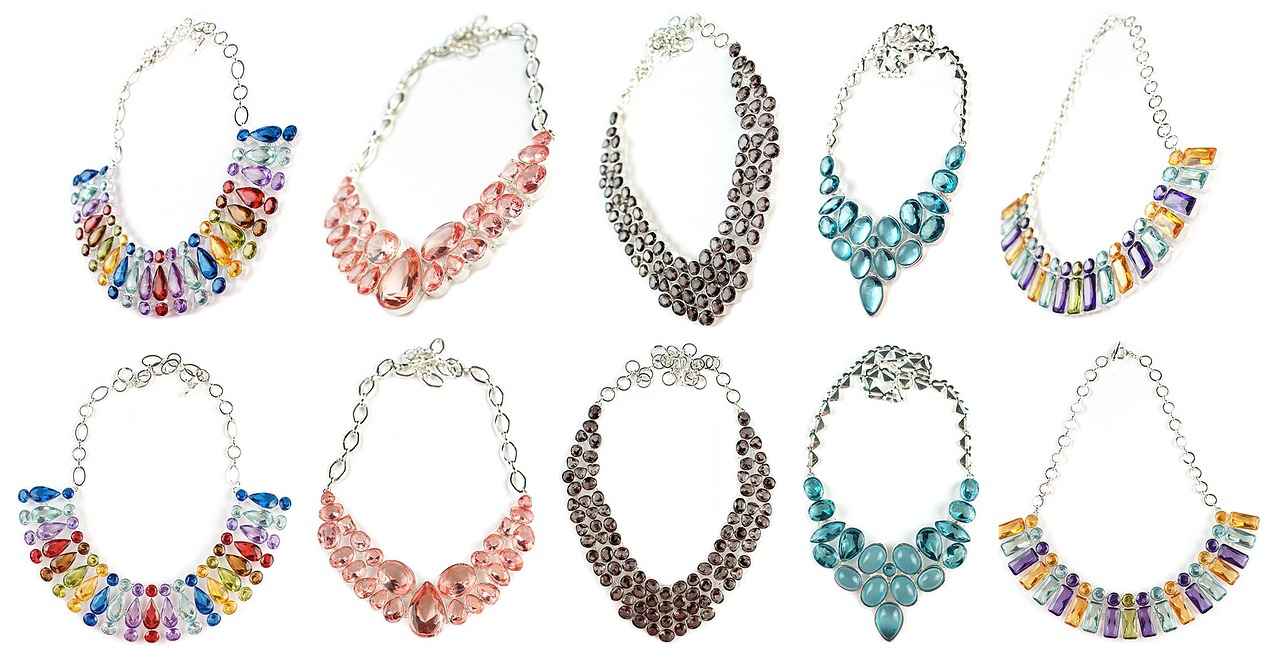
How Does Moissanite Compare to Diamonds?
When it comes to selecting the perfect gemstone for jewelry, understanding the differences in composition, hardness, and brilliance between moissanite and diamonds is crucial for consumers. This knowledge not only empowers buyers but also helps them make informed decisions, ensuring they choose a gemstone that aligns with their values and preferences.
What is the Composition of Moissanite and Diamonds?
Moissanite is primarily composed of silicon carbide, while diamonds are made of carbon. This fundamental difference in composition significantly affects their visual characteristics and overall pricing. Moissanite’s unique structure allows it to exhibit a remarkable brilliance that can often surpass that of diamonds, making it a popular choice for those who prioritize sparkle.
How Does Hardness Affect Durability?
On the Mohs scale of hardness, moissanite ranks at approximately 9.25, whereas diamonds achieve a perfect score of 10. This means that while diamonds are the hardest known natural material, moissanite is still incredibly durable and suitable for everyday wear. For consumers concerned about the longevity of their jewelry, both gemstones offer excellent resistance to scratches and damage.
What About Brilliance and Fire?
One of the most striking differences between moissanite and diamonds lies in their brilliance and fire. Moissanite has a higher refractive index than diamonds, which results in a more vibrant sparkle. This characteristic is often described as “fire,” referring to the colorful flashes of light that can be seen as the stone moves. Many consumers find the increased brilliance of moissanite to be more visually appealing, making it a compelling alternative to traditional diamonds.
Are There Ethical Considerations?
Ethical sourcing has become a significant factor in the gemstone market. Moissanite’s lab-created nature eliminates concerns associated with conflict diamonds and unethical mining practices. Consumers who prioritize ethical considerations can feel confident in choosing moissanite, knowing that it is produced in a controlled environment with minimal environmental impact.
How Does Pricing Compare?
One of the most appealing aspects of moissanite is its affordability. Typically, moissanite costs 20-40% less than diamonds of similar size and quality. This price difference allows consumers to invest in a stunning gemstone without breaking the bank. For those on a budget, moissanite provides an attractive option that doesn’t sacrifice beauty for cost.
What Are the Popular Uses for Moissanite?
Moissanite is versatile and can be found in various types of jewelry, from engagement rings to fashion pieces. Its increasing popularity in engagement rings is attributed to its stunning appearance and lower cost, making it an ideal choice for modern couples. Additionally, designers are increasingly incorporating moissanite into custom jewelry designs, appealing to a wide range of personal styles.
How to Care for Moissanite Jewelry?
- Cleaning: Moissanite can be easily cleaned using mild soap and warm water. Regular cleaning helps maintain its sparkle and removes any buildup from daily wear.
- Storage: To prevent scratches and damage, it is advisable to store moissanite jewelry separately from other pieces. This care ensures that it remains in pristine condition for years to come.
In summary, understanding the differences between moissanite and diamonds in terms of composition, hardness, brilliance, ethical considerations, and pricing is essential for consumers. By recognizing these factors, individuals can make informed decisions that align with their values and preferences, ultimately leading to a more satisfying jewelry purchase.
Composition and Origin
Understanding the composition and origin of gemstones is crucial for making informed choices when selecting jewelry. Moissanite and diamonds are two popular options, each with unique properties that cater to different preferences and values.
What is Moissanite Made Of?
Moissanite is primarily composed of silicon carbide, a compound that gives it remarkable durability and brilliance. This synthetic gemstone was first discovered in a meteorite in 1893 by the French chemist Henri Moissan, who later won a Nobel Prize for his work. Today, moissanite is created in laboratory settings, ensuring consistent quality and ethical production.
How Do Diamonds Form?
In contrast, diamonds are formed naturally under extreme heat and pressure deep within the Earth’s mantle. Composed entirely of carbon, diamonds take millions of years to form, making them rare and highly sought after. The mining process for diamonds, however, has raised ethical concerns regarding environmental impact and labor practices.
Appearance Differences: Moissanite vs. Diamonds
Due to their different compositions, moissanite and diamonds exhibit distinct visual characteristics. Moissanite has a higher refractive index than diamonds, resulting in a greater level of brilliance and fire. This means that moissanite can appear more sparkly and vibrant, often captivating those who appreciate a gemstone’s visual appeal.
Price Variability: Why Moissanite is More Affordable
The differences in origin and production methods also lead to significant price disparities. Moissanite typically costs 20-40% less than comparable diamonds, making it an attractive option for budget-conscious consumers. This affordability does not compromise beauty or quality, allowing individuals to invest in stunning jewelry without breaking the bank.
Environmental Impact of Diamond Mining
Another important factor to consider is the environmental impact associated with diamond mining. Traditional diamond extraction can lead to habitat destruction, soil erosion, and significant ecological damage. In contrast, the creation of moissanite in controlled environments minimizes these environmental concerns, making it a more sustainable choice for those who prioritize ecological responsibility.
Ethical Considerations: Supporting Sustainable Practices
Many consumers are increasingly aware of the ethical implications of their purchases. Choosing moissanite over mined diamonds eliminates concerns related to conflict diamonds and unethical mining practices. By opting for lab-created gemstones, buyers can support sustainable practices and promote a more responsible jewelry industry.
Durability and Longevity
When it comes to durability, moissanite ranks at 9.25 on the Mohs scale of hardness, making it nearly as resilient as diamonds, which score a perfect 10. This high level of durability ensures that moissanite can withstand the rigors of everyday wear, making it suitable for various types of jewelry, including engagement rings and fashion pieces.
Consumer Preferences: The Shift Towards Moissanite
As consumers become more educated about the differences between moissanite and diamonds, many are opting for moissanite due to its combination of beauty, affordability, and ethical sourcing. This shift reflects a growing trend towards making more conscious choices in the jewelry market.
Natural vs. Lab-Created
When it comes to choosing a gemstone, many consumers find themselves weighing the options between natural diamonds and lab-created alternatives like moissanite. Understanding the differences between these two types of stones can significantly influence purchasing decisions. One of the most notable distinctions lies in their origin and the ethical implications associated with each.
Moissanite, a gemstone made from silicon carbide, was first discovered in 1893 and has since gained popularity as a brilliant and affordable alternative to diamonds. Unlike diamonds, which are mined from the earth, moissanite is created in controlled lab environments. This process not only ensures ethical sourcing but also minimizes the environmental impact typically associated with mining.
- Conflict-Free Assurance: One of the primary concerns with natural diamonds is the potential for them to be sourced from conflict zones, where mining operations may fund violence or exploitation. Moissanite’s lab-created nature eliminates this concern entirely.
- Environmental Considerations: Diamond mining is notorious for its detrimental effects on ecosystems, including habitat destruction and pollution. In contrast, moissanite production has a significantly lower environmental footprint.
- Supporting Sustainable Practices: By choosing moissanite, consumers are actively supporting sustainable practices that prioritize ethical production over traditional mining methods.
The creation of moissanite in a laboratory setting involves advanced technology that replicates the natural conditions under which diamonds form. This process results in a gemstone that not only resembles diamonds in appearance but also possesses remarkable durability and brilliance. With a hardness rating of 9.25 on the Mohs scale, moissanite is nearly as hard as diamonds, making it suitable for everyday wear.
One of the most striking features of moissanite is its superior brilliance compared to diamonds. Moissanite has a higher refractive index, which means it can reflect light more effectively, resulting in a more sparkly appearance. Many people find that the fire and brilliance of moissanite often surpass that of traditional diamonds, making it an attractive option for those seeking a stunning gemstone.
Another significant advantage of choosing moissanite over diamonds is the cost. Typically, moissanite is priced 20-40% lower than diamonds of similar size and quality. This affordability allows consumers to purchase larger stones or opt for more intricate designs without exceeding their budget.
Moissanite’s durability makes it an excellent choice for various types of jewelry, including engagement rings and everyday wear pieces. To maintain its brilliance, regular cleaning is recommended. A simple solution of mild soap and water can effectively remove dirt and oils, ensuring that the gemstone retains its sparkly appearance.
As consumers become more conscious of ethical and environmental issues, the appeal of moissanite continues to grow. Its combination of stunning beauty, affordability, and ethical production makes it a compelling choice for anyone in the market for a gemstone. Whether for an engagement ring, fashion jewelry, or a meaningful gift, moissanite offers a responsible and beautiful alternative to traditional diamonds.
Brilliance and Fire
When it comes to selecting a gemstone that combines beauty with affordability, moissanite has emerged as a captivating alternative to traditional diamonds. One of the standout features of moissanite is its exceptional brilliance and fire, which are often highlighted in discussions about its advantages over diamonds.
Moissanite exhibits a remarkable refractive index of 2.65 to 2.69, significantly higher than that of diamonds, which range from 2.42 to 2.44. This higher refractive index is a key factor contributing to its stunning visual appeal. The way light interacts with moissanite creates a dazzling effect that can be described as sparkly and vibrant, often outshining diamonds in various lighting conditions.
In addition to brilliance, fire refers to the colorful flashes of light that a gemstone emits when it is exposed to light. Moissanite’s unique optical properties allow it to disperse light more effectively than diamonds, producing a spectrum of colors that can be mesmerizing. This characteristic makes moissanite particularly appealing to those who appreciate a gemstone that radiates more than just a traditional sparkle.
| Characteristic | Moissanite | Diamond |
|---|---|---|
| Refractive Index | 2.65 – 2.69 | 2.42 – 2.44 |
| Brilliance | Higher | Standard |
| Fire | More Colorful | Less Colorful |
- Visual Appeal: The increased sparkle and fire make moissanite an attractive choice for those looking for eye-catching jewelry.
- Value for Money: Moissanite offers similar visual qualities to diamonds at a fraction of the cost.
- Ethical Considerations: Lab-created moissanite is free from the ethical concerns often associated with diamond mining.
When selecting moissanite, consider factors such as cut, color, and clarity. Each of these elements can significantly influence the overall brilliance and fire of the gemstone. A well-cut moissanite will maximize its light performance, ensuring that it sparkles beautifully in any setting.
To preserve the stunning brilliance and fire of your moissanite jewelry, regular cleaning is essential. Use a gentle solution of mild soap and warm water, and avoid harsh chemicals that could dull its sparkle. Storing your moissanite separately from other jewelry can also prevent scratches and keep it looking as radiant as the day you bought it.
In summary, moissanite’s superior refractive index and the resulting brilliance and fire make it an increasingly popular choice among consumers. With its ethical sourcing, affordability, and captivating visual qualities, moissanite stands out as a remarkable alternative to diamonds, appealing to a wide range of tastes and preferences.
Durability and Hardness
When considering gemstones for jewelry, durability and hardness are two critical factors that consumers often weigh heavily. Among these, moissanite stands out as an excellent alternative to diamonds, particularly when it comes to its impressive resilience.
Moissanite ranks 9.25 on the Mohs scale of hardness, making it nearly as durable as diamonds, which score a perfect 10. This remarkable hardness level means that moissanite can resist scratches and abrasions, making it a practical choice for everyday wear.
The hardness of a gemstone is crucial for its longevity and appearance. A higher hardness rating indicates that the stone can withstand the rigors of daily life without losing its luster or developing noticeable scratches. This is particularly important for rings and bracelets that are subject to constant contact.
Moissanite’s durability is attributed to its unique crystalline structure, which is composed of silicon carbide. This structure not only contributes to its hardness but also enhances its brilliance and fire, making it one of the most visually stunning alternatives to traditional gemstones.
Consumers often wonder about the long-term performance of moissanite. Due to its high hardness rating, moissanite maintains its sparkle and clarity over time, even with regular wear. Unlike softer gemstones, which may dull or scratch easily, moissanite remains resilient, making it a wise investment for those looking for lasting beauty.
- Everyday Wear: Moissanite can be worn daily without the constant worry of damage.
- Low Maintenance: Its hardness means less frequent professional cleaning and upkeep.
- Versatile Designs: Jewelers can create intricate designs without compromising the stone’s integrity.
While moissanite is highly durable, it is still important to care for it properly to maintain its brilliance. Regular cleaning using mild soap and water can help remove dirt and oils that accumulate over time. Storing moissanite separately from other jewelry pieces can also help prevent scratches.
Despite its impressive hardness, it is essential to note that no gemstone is entirely impervious to damage. Moissanite can chip or break if subjected to extreme force or impact. Therefore, while it is a durable choice, consumers should still handle it with care.
In conclusion, moissanite’s ranking of 9.25 on the Mohs scale highlights its impressive durability and suitability for everyday wear. This quality, combined with its affordability and ethical sourcing, positions moissanite as a compelling alternative to diamonds. Whether for engagement rings, fashion jewelry, or other adornments, moissanite offers a blend of beauty and resilience that appeals to a broad range of consumers.

What Are the Cost Benefits of Choosing Moissanite?
When it comes to choosing a gemstone, cost is often a significant factor for many consumers. In this regard, moissanite stands out as a remarkable alternative to traditional diamonds. Understanding the financial benefits of selecting moissanite can empower consumers to make informed choices without compromising on beauty.
One of the most notable advantages of moissanite is its affordability. Unlike diamonds, which can carry hefty price tags, moissanite typically costs 20-40% less than diamonds of similar size and quality. This price difference allows consumers to enjoy a stunning gemstone while staying within their budget.
When comparing the costs, it’s essential to consider the size and quality of the stones. For instance, a one-carat diamond can easily cost thousands of dollars, while a one-carat moissanite can often be found for a fraction of that price. This significant cost reduction makes moissanite an attractive option for budget-conscious consumers who still desire the elegance and allure of a beautiful gemstone.
While diamonds are often seen as a long-term investment due to their ability to retain value, moissanite’s lower initial cost presents a different kind of value. Consumers can invest in a larger or higher-quality stone without the financial strain associated with purchasing a diamond. This allows for greater flexibility in choosing a piece that resonates personally and aesthetically.
It’s also important to consider that the maintenance and care of moissanite jewelry are generally similar to those of diamonds. However, the lower price point means that even if a piece needs to be replaced or upgraded in the future, the financial impact will be less severe. This aspect is particularly appealing for individuals who may want to change their jewelry styles over time.
Beyond cost, many consumers are increasingly concerned about the ethical implications of their purchases. Moissanite is a lab-created gemstone, which means it is produced in controlled environments, eliminating the ethical concerns associated with mined diamonds. By choosing moissanite, consumers can feel confident that their purchase supports sustainable practices and ethical sourcing.
- Quality of the Stone: When selecting moissanite, it’s crucial to consider the quality, including clarity and cut, which can affect its overall appearance.
- Vendor Reputation: Purchasing from a reputable vendor ensures that the moissanite is genuine and meets quality standards.
- Warranty and Return Policies: Understanding the warranty and return policies can provide peace of mind and protect your investment.
In conclusion, the cost benefits of choosing moissanite are clear. With its affordability, ethical sourcing, and long-term value considerations, moissanite presents a compelling option for consumers seeking beauty without the burden of excessive costs. By understanding these advantages, individuals can make informed decisions that align with their financial goals and personal values.
Price Comparison with Diamonds
When it comes to choosing the perfect gemstone, cost is often a significant factor for many consumers. Moissanite, a lab-created gemstone, has emerged as a popular alternative to diamonds, particularly due to its affordability. In this section, we will explore the price comparison between moissanite and diamonds, highlighting the benefits of choosing moissanite for budget-conscious shoppers.
Moissanite typically costs 20-40% less than diamonds of similar size and quality. This price difference can be attributed to several factors, including the origin of the stones and the production process. While diamonds are mined from the earth, often requiring extensive labor and resources, moissanite is created in controlled environments, which significantly reduces production costs. As a result, consumers can enjoy a stunning gemstone without breaking the bank.
The lower price point of moissanite makes it an attractive option for those looking to maximize their budget. Couples planning engagement rings or individuals seeking beautiful jewelry can find high-quality moissanite stones that mimic the appearance of diamonds at a fraction of the cost. This affordability allows for larger or more intricately designed pieces, providing consumers with the opportunity to choose styles that they may not have considered with traditional diamonds.
While diamonds are traditionally seen as a long-term investment due to their ability to hold value, moissanite offers a different kind of value proposition. The initial lower cost allows consumers to invest in more jewelry or to save for other significant expenses, such as a home or travel. Additionally, as moissanite becomes more popular and recognized for its beauty and durability, its value may also increase over time, although it is essential to note that it may not appreciate in the same way that diamonds do.
Many consumers are surprised by the brilliance and fire of moissanite, which often surpasses that of diamonds due to its higher refractive index. This means that even though moissanite is less expensive, it can appear more vibrant and sparkly, making it an excellent choice for engagement rings and other fine jewelry. The combination of affordability and aesthetic appeal makes moissanite a compelling option for those who desire stunning jewelry without the hefty price tag.
As awareness of moissanite grows, many consumers are shifting their preferences from traditional diamonds to this lab-created alternative. The reasons are clear: not only is moissanite more affordable, but it also aligns with ethical considerations. With the increasing demand for sustainable and ethically sourced products, moissanite presents a solution that appeals to the modern consumer.
In summary, the price comparison between moissanite and diamonds reveals that moissanite is often the smarter financial choice for consumers. With its lower cost, stunning appearance, and ethical production, moissanite provides an excellent alternative for those looking to invest in beautiful jewelry without compromising their budget. Whether for engagement rings, fashion jewelry, or special gifts, moissanite offers a compelling blend of value and beauty that resonates with today’s discerning shoppers.
Long-Term Value Considerations
When considering the purchase of a gemstone, one of the most important factors to evaluate is its long-term value. In this context, moissanite emerges as a compelling alternative to traditional diamonds. While diamonds have long been viewed as a symbol of luxury and permanence, moissanite’s unique attributes make it an attractive option for consumers seeking both beauty and affordability.
Moissanite is a lab-created gemstone that offers a stunning visual appeal at a fraction of the cost of diamonds. Its brilliance and fire often surpass that of diamonds, leading many to question whether the higher price of diamonds is justified. The key to understanding the long-term value of moissanite lies in its affordability and the factors that contribute to its market perception.
When comparing the costs, moissanite typically ranges from 20% to 40% less than diamonds of similar size and quality. This significant price difference makes moissanite an appealing choice for budget-conscious consumers. For instance, a 1-carat moissanite can cost around $600, while a comparable diamond may exceed $1,000. This stark contrast allows consumers to invest in a larger or higher-quality gemstone without exceeding their budget.
While diamonds are known for holding their value over time, the resale market for moissanite is still developing. Many consumers may wonder if moissanite will retain its value in the long run. As awareness and acceptance of moissanite grow, it is likely that its resale value will improve. However, it is essential to note that lab-created stones generally do not appreciate in value like natural diamonds, which can sometimes be seen as a drawback.
- Affordability: The lower initial cost allows consumers to purchase a larger or more intricate piece of jewelry.
- Ethical Sourcing: Moissanite is created in a lab, eliminating concerns over conflict diamonds and unethical mining practices.
- Durability: With a hardness rating of 9.25 on the Mohs scale, moissanite is incredibly durable, making it suitable for everyday wear.
- Brilliance: Moissanite’s high refractive index results in exceptional sparkle, often outshining diamonds.
For those contemplating a purchase, it is essential to weigh the pros and cons of choosing moissanite over diamonds. While diamonds may hold their value better, the affordability and ethical considerations of moissanite make it a strong contender. Additionally, the growing popularity of moissanite suggests that consumer demand could lead to increased recognition and value in the future.
Ultimately, the decision to choose moissanite over diamonds depends on individual preferences and values. If you prioritize affordability, ethical sourcing, and brilliance, moissanite may be the perfect gemstone for you. Understanding the long-term value considerations can help you make an informed choice that aligns with your budget and ethical standards.

Are There Any Ethical Considerations?
In today’s world, consumers are increasingly concerned about the ethical implications of their purchases. This shift in focus has led to a growing interest in ethical sourcing, particularly in the jewelry industry. One gemstone that stands out in this regard is moissanite, a lab-created alternative to traditional diamonds. As we delve into the ethical considerations surrounding moissanite, it becomes clear why it is gaining traction among conscientious buyers.
Ethical sourcing refers to the practice of ensuring that the materials used in products are obtained in a responsible manner, considering both environmental and social factors. For many consumers, this means avoiding products that contribute to conflict diamonds or exploitative mining practices. With moissanite being lab-created, it alleviates these concerns and offers a guilt-free choice for those who prioritize ethics in their purchasing decisions.
Moissanite’s unique origin plays a significant role in its ethical appeal. Unlike natural diamonds, which are often mined under questionable conditions, moissanite is produced in controlled environments. This process ensures that no human rights violations or environmental degradation occur during its creation. By choosing moissanite, consumers can enjoy a beautiful gemstone without the ethical dilemmas that accompany mined diamonds.
The environmental impact of diamond mining is substantial, often leading to habitat destruction and significant carbon footprints. In contrast, moissanite production has a much lower environmental footprint. Lab-created gemstones require fewer resources, minimizing waste and energy consumption. This aspect makes moissanite a more sustainable choice, appealing to eco-conscious consumers.
By opting for moissanite, consumers actively support sustainable practices in the gemstone industry. The demand for lab-created stones encourages innovation and investment in technologies that prioritize ethical production methods. Moreover, this shift away from mined diamonds can help reduce the overall environmental damage caused by mining operations. In essence, choosing moissanite is a step towards promoting a more sustainable future.
Beyond environmental concerns, the social implications of gemstone sourcing are critical. Many diamond mines are associated with exploitation of workers, often involving dangerous working conditions and unfair wages. In contrast, the production of moissanite occurs in regulated facilities that adhere to labor laws, ensuring fair treatment and safe working environments for employees. This aspect of moissanite’s creation aligns with the values of consumers who prioritize ethical labor practices.
Consumers interested in making ethical choices should educate themselves about the origins of the gemstones they purchase. Researching brands and their sourcing practices can provide valuable insights into their commitment to ethical standards. Additionally, seeking certifications or endorsements from reputable organizations can help ensure that the gemstones are sourced responsibly.
As awareness of ethical sourcing continues to grow, the demand for lab-created gemstones like moissanite is expected to rise. This trend reflects a broader movement towards sustainability and ethical consumerism across various industries. Jewelers and brands are increasingly recognizing the importance of offering ethically sourced options to meet consumer demand. As a result, we can anticipate a future where ethical considerations play a central role in the jewelry market.
In conclusion, the ethical considerations surrounding moissanite make it a compelling choice for consumers seeking beautiful gemstones without the associated moral dilemmas. By choosing moissanite, buyers can enjoy stunning jewelry while supporting sustainable practices and ethical labor conditions.
Environmental Impact
When considering the environmental impact of gemstones, moissanite emerges as a particularly appealing choice. The production of moissanite has a significantly lower environmental footprint compared to traditional diamond mining, which can be detrimental to ecosystems and local communities.
Moissanite is created in controlled laboratory environments, which allows for a more sustainable approach to gemstone production. This method not only reduces the ecological disruption associated with mining but also conserves natural resources. Here are some key points to consider:
- Minimal Land Disruption: Unlike diamond mining, which often requires extensive land clearing and excavation, moissanite production takes place in a lab setting. This significantly reduces the impact on natural habitats and wildlife.
- Water Conservation: Diamond mining often consumes vast amounts of water, leading to depletion of local water sources. In contrast, moissanite manufacturing uses considerably less water, promoting better conservation practices.
- Energy Efficiency: The energy required to produce moissanite is generally lower than that needed for diamond mining, which can be an energy-intensive process involving heavy machinery and transportation.
In addition to its environmental benefits, moissanite production promotes ethical sourcing. The lab-created nature of moissanite eliminates concerns associated with conflict diamonds, which are mined in war zones and sold to finance armed conflict. By choosing moissanite, consumers can:
- Support Ethical Practices: Purchasing moissanite supports sustainable practices and ethical labor conditions, as its production does not rely on exploitative mining practices.
- Contribute to Local Economies: While diamond mining can lead to economic disparity and exploitation, the moissanite industry fosters job creation in a more equitable manner, benefiting local communities without the associated harms of mining.
As consumers become increasingly aware of the environmental and social impacts of their purchases, moissanite is gaining traction as a sustainable alternative in the jewelry industry. The rise in demand for eco-friendly options encourages jewelers to consider moissanite for its brilliance and affordability, while also aligning with sustainable practices.
Moreover, the versatility of moissanite allows it to be used in various types of jewelry, including engagement rings, earrings, and necklaces, making it a popular choice for those seeking both beauty and sustainability. The growing trend towards sustainable jewelry reflects a broader shift in consumer behavior, with many individuals prioritizing ethical considerations in their purchasing decisions.
As awareness of the environmental and ethical implications of gemstone sourcing continues to grow, moissanite stands out as a responsible choice for consumers. With its lower environmental impact, ethical production methods, and stunning aesthetic appeal, moissanite is not just an alternative to diamonds but a forward-thinking option that aligns with modern values. By choosing moissanite, consumers can enjoy the beauty of a gemstone while also making a positive impact on the planet.
Supporting Ethical Practices
In recent years, the demand for ethically sourced gemstones has surged, with consumers becoming increasingly aware of the environmental and social implications of their purchases. One gemstone that stands out in this regard is moissanite. By choosing moissanite, consumers can support sustainable practices and contribute to a more ethical jewelry industry.
Moissanite is a lab-created gemstone, which means it is produced in controlled environments rather than extracted from the earth. This distinction is crucial, as traditional diamond mining often involves significant environmental degradation and exploitation of workers. The mining process can lead to habitat destruction, water pollution, and harmful working conditions for miners, particularly in developing countries.
One of the most compelling reasons to choose moissanite is its lower environmental impact. The production of moissanite requires far fewer natural resources and generates less waste compared to diamond mining. Here are some key points:
- Minimal Land Disruption: Lab-grown gemstones do not require extensive land clearing or excavation, preserving ecosystems and wildlife habitats.
- Reduced Carbon Footprint: The energy consumption associated with creating moissanite is significantly lower than that of mining diamonds, helping to combat climate change.
- Water Conservation: Moissanite production uses less water than diamond mining, which is crucial in regions where water scarcity is a pressing issue.
Choosing moissanite also aligns with a commitment to social responsibility. The gemstone’s lab-created nature eliminates concerns related to conflict diamonds, which are mined in war zones and sold to finance armed conflict. By opting for moissanite, consumers can ensure their purchases do not contribute to human rights abuses. Here’s how moissanite promotes ethical practices:
- Fair Labor Practices: The production of moissanite occurs in regulated environments where workers are protected by labor laws, ensuring fair wages and safe working conditions.
- Transparency: Consumers can trace the origins of their moissanite stones, providing peace of mind that they are supporting ethical sourcing.
- Community Support: Many lab-grown gemstone companies invest in local communities, contributing to education and healthcare initiatives.
By choosing moissanite, consumers actively support sustainable practices in the jewelry industry. This choice promotes the use of lab-created gemstones over mined alternatives, which often involve exploitation. Here are some ways this shift impacts sustainability:
- Encouraging Innovation: The growing popularity of lab-created gemstones encourages technological advancements in gemstone production, leading to more sustainable practices across the industry.
- Shifting Consumer Demand: As more people choose ethical options like moissanite, it pressures traditional diamond suppliers to adopt more sustainable and ethical practices.
- Raising Awareness: The conversation around moissanite helps educate consumers about the ethical implications of their purchases, fostering a more informed and conscientious market.
In summary, choosing moissanite is not just about selecting a beautiful gemstone; it is also a conscious decision that supports ethical and sustainable practices. By opting for lab-created moissanite, consumers can enjoy the beauty and brilliance of a gemstone while making a positive impact on the environment and society. As the jewelry industry continues to evolve, moissanite stands out as a shining example of how we can align our values with our purchases.
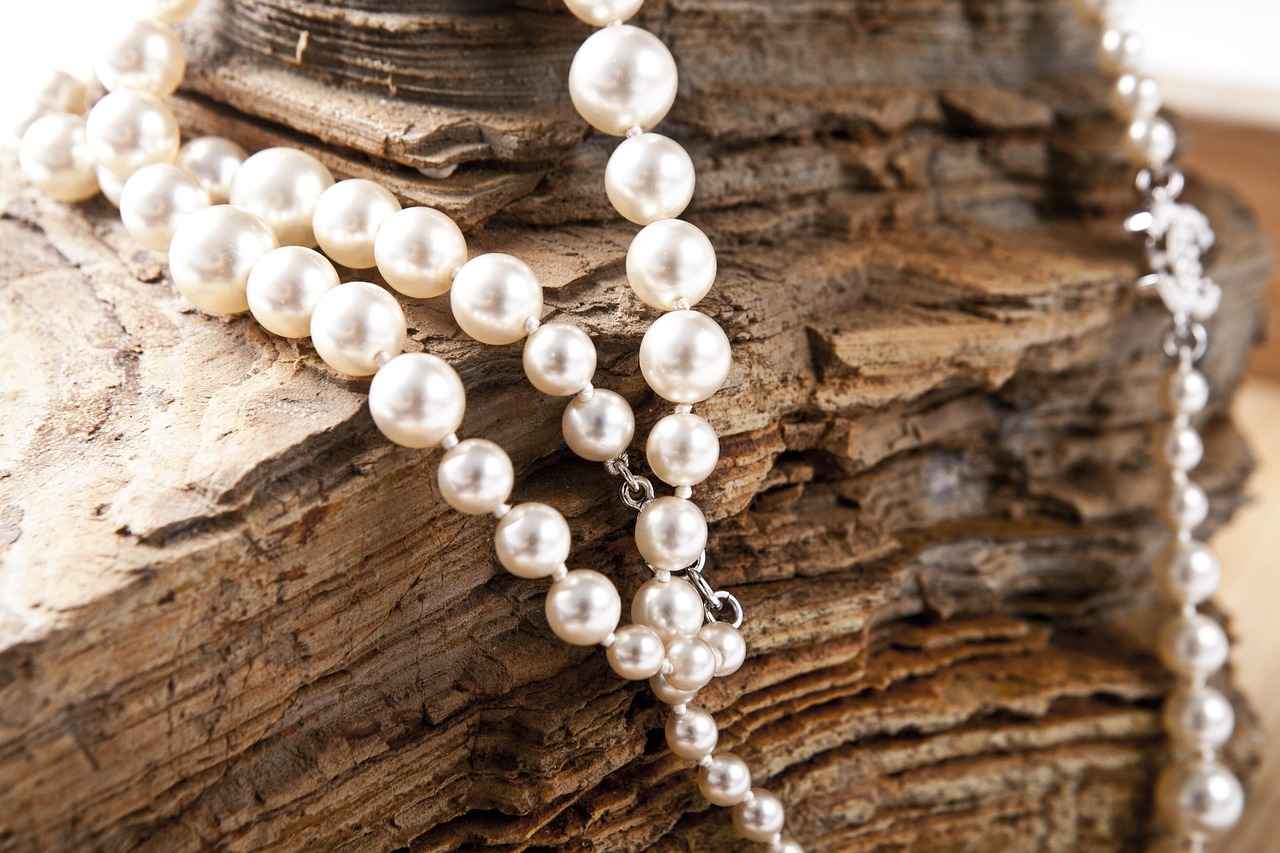
What Are the Popular Uses for Moissanite?
Moissanite has rapidly gained recognition not only as a stunning alternative to diamonds but also for its remarkable versatility in various jewelry applications. Its unique characteristics and affordability make it a favored choice among both designers and consumers. In this section, we delve into the popular uses of moissanite and why it is becoming a go-to gemstone for many.
Engagement rings are often seen as a symbol of love and commitment, and moissanite has become a preferred choice for many couples. The brilliance and fire of moissanite often exceed that of traditional diamonds, making it an eye-catching option. Additionally, its affordability allows couples to invest in larger stones or more intricate designs without breaking the bank.
In addition to engagement rings, moissanite is also popular in wedding bands. Many couples select matching moissanite wedding bands that complement their engagement rings. The durability of moissanite, ranking 9.25 on the Mohs hardness scale, ensures that these bands can withstand daily wear and tear, making them a practical yet beautiful choice.
Moissanite’s versatility extends beyond traditional engagement and wedding jewelry. It is increasingly being used in fashion jewelry, including earrings, necklaces, and bracelets. Designers appreciate moissanite for its ability to be cut into various shapes and sizes, allowing for creative and unique designs that cater to diverse tastes.
Custom jewelry is on the rise, and moissanite plays a significant role in this trend. Many consumers opt for personalized pieces that incorporate moissanite due to its affordability and stunning appearance. Custom designs can include anything from intricate settings to personalized engravings, making each piece truly one-of-a-kind.
Moissanite is also making its mark in the realm of birthstone jewelry. While traditional birthstones are typically natural gemstones, moissanite can be incorporated into designs to create unique pieces that celebrate individual birth months. Its brilliance can add a touch of elegance to any birthstone jewelry, making it a thoughtful gift.
Costume jewelry often aims to replicate the look of fine jewelry at a fraction of the cost. Moissanite serves as an excellent option in this category, providing a luxurious appearance without the hefty price tag. Its sparkle and durability make it suitable for trendy pieces that are meant to be worn on various occasions.
Moissanite is not limited to women’s jewelry; it is also gaining popularity in men’s jewelry. From cufflinks to rings, men are embracing moissanite as a stylish and sophisticated option. The modern aesthetic of moissanite appeals to those looking for something unique yet elegant.
Artistic jewelry designers are increasingly incorporating moissanite into their creations. The gemstone’s versatility and brilliance allow for innovative designs that push the boundaries of traditional jewelry. From abstract shapes to intricate settings, moissanite is helping artists express their creativity in new and exciting ways.
In summary, moissanite’s popularity continues to grow due to its stunning appearance, versatility, and affordability. Whether in engagement rings, fashion jewelry, or custom designs, moissanite offers something for everyone, making it an excellent choice for those seeking beauty and value.
Engagement Rings and Wedding Bands
When it comes to choosing the perfect engagement ring or wedding band, many couples are exploring alternatives to traditional diamonds. One such option that is gaining significant popularity is moissanite. Known for its stunning appearance and affordability, moissanite has emerged as a favored choice for modern weddings. This article delves into the reasons behind this trend and highlights the benefits of opting for moissanite.
Moissanite engagement rings are becoming increasingly popular for several reasons:
- Beauty: Moissanite is renowned for its remarkable brilliance and fire, often exceeding that of diamonds. Its high refractive index results in a sparkling appearance that captures attention.
- Affordability: One of the most compelling reasons couples are turning to moissanite is its cost-effectiveness. Moissanite typically costs 20-40% less than diamonds of similar size and quality, making it a budget-friendly option.
- Ethical Sourcing: With growing concerns about the ethical implications of diamond mining, many consumers appreciate that moissanite is lab-created. This eliminates worries about conflict diamonds and promotes sustainable practices.
Moissanite stands out not only for its beauty but also for its unique characteristics:
- Durability: Ranking 9.25 on the Mohs scale of hardness, moissanite is nearly as durable as diamonds, which score a perfect 10. This makes it an excellent choice for everyday wear.
- Versatility: Moissanite can be fashioned into various styles, from classic solitaires to intricate vintage designs, catering to diverse tastes and preferences.
When selecting a moissanite engagement ring, consider the following factors:
- Cut: The cut of the moissanite impacts its brilliance. Opt for a well-cut stone to maximize its sparkle.
- Color: Moissanite is available in various color grades. Choose a color that complements your style—colorless options mimic diamonds closely.
- Carat Weight: Determine the size that feels right for you. Moissanite offers a range of carat weights, allowing for personalization.
To maintain the beauty of your moissanite engagement ring, follow these care tips:
- Regular Cleaning: Clean your moissanite jewelry with a mixture of mild soap and warm water. A soft brush can help remove any build-up.
- Safe Storage: Store your moissanite rings separately to avoid scratches. A soft pouch or a dedicated jewelry box works well.
Many reputable jewelers offer a range of moissanite engagement rings. Look for retailers that provide certification for their stones, ensuring quality and authenticity. Online platforms also feature a variety of designs, often at competitive prices.
In conclusion, moissanite engagement rings and wedding bands represent a beautiful, ethical, and affordable choice for couples today. With their stunning appearance and growing acceptance, moissanite stones continue to shine brightly in the world of fine jewelry.
Fashion Jewelry and Custom Designs
In the world of fashion jewelry, moissanite is rapidly gaining recognition as a versatile and appealing option for unique designs. This lab-created gemstone not only mimics the brilliance of diamonds but also offers a wide array of colors and cuts, making it a favorite among designers and fashion enthusiasts alike.
Moissanite’s growing popularity in fashion jewelry can be attributed to several key factors:
- Affordability: Compared to diamonds, moissanite is significantly less expensive, allowing for more creative freedom in jewelry design without breaking the bank.
- Variety of Colors: Moissanite comes in various colors, including colorless, near-colorless, and even shades of yellow and green. This range allows designers to create pieces that cater to diverse tastes.
- Unique Cuts: The ability to create custom cuts means that moissanite can be fashioned into intricate designs that stand out in the competitive fashion jewelry market.
Moissanite’s characteristics make it an exceptional choice for custom jewelry:
- Brilliance and Fire: With a higher refractive index than diamonds, moissanite sparkles more intensely, making it perfect for statement pieces that catch the eye.
- Durability: Scoring 9.25 on the Mohs scale, moissanite is nearly as hard as diamonds, ensuring that fashion jewelry can withstand daily wear while maintaining its beauty.
- Ethical Considerations: As a lab-created gemstone, moissanite appeals to consumers who prioritize ethical sourcing, making it a thoughtful choice for those looking to make responsible purchases.
Moissanite is not limited to engagement rings; its versatility allows for a range of styles:
- Statement Necklaces: Designers are using moissanite to create stunning necklaces that feature intricate designs and bold settings, perfect for special occasions.
- Fashion-Forward Earrings: From studs to chandelier styles, moissanite earrings offer a touch of glamour that can elevate any outfit.
- Custom Bracelets: Moissanite can be incorporated into bracelets, adding sparkle and elegance to everyday wear or formal attire.
When selecting moissanite for fashion jewelry, consider the following:
- Quality and Cut: Look for well-cut stones that maximize brilliance and fire. The cut significantly influences the overall appearance of the jewelry.
- Color Options: Decide on the color that best fits your style. Colorless stones offer a classic look, while colored options can provide a unique twist.
- Setting Style: The setting can dramatically affect the final look. Explore different metals and designs to find the perfect match for your moissanite piece.
In conclusion, moissanite is revolutionizing the fashion jewelry industry with its affordability, brilliance, and ethical considerations. Its ability to cater to various styles and preferences makes it a sought-after choice for both designers and consumers. As trends continue to evolve, moissanite’s role in the realm of fashion jewelry is likely to expand, offering even more creative possibilities for unique and stunning designs.
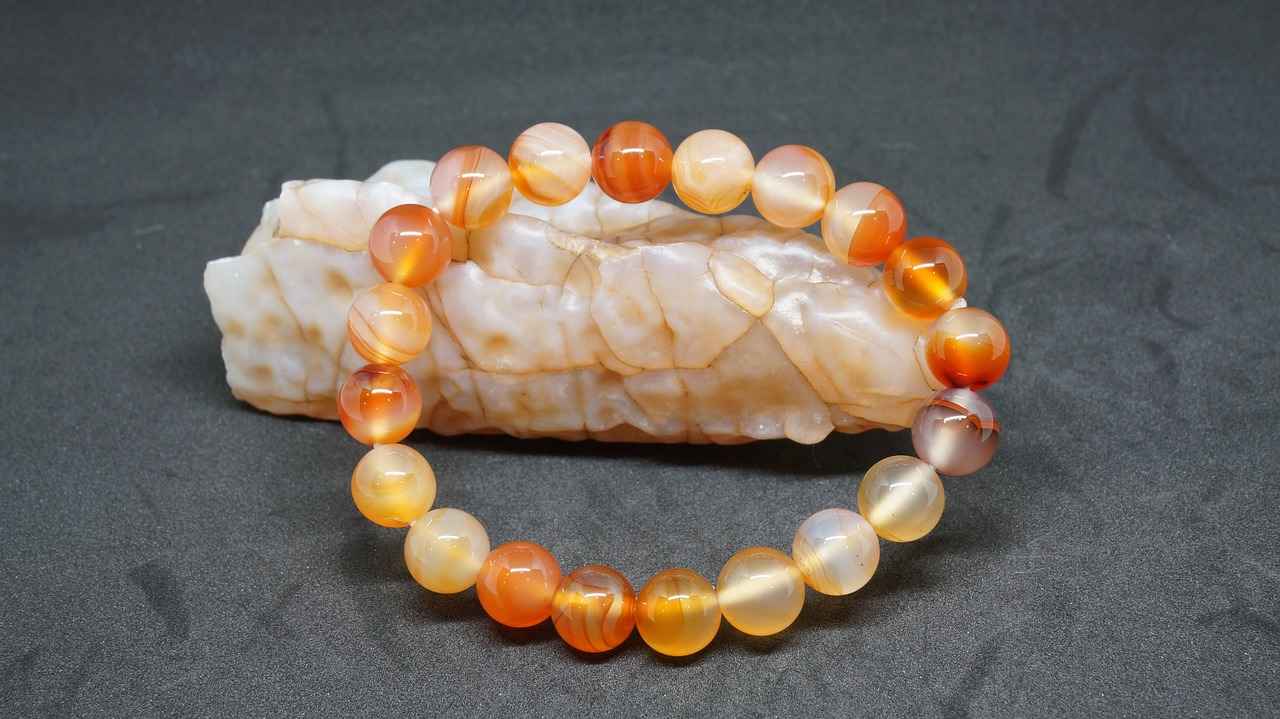
How to Care for Moissanite Jewelry?
Moissanite jewelry has gained significant popularity due to its stunning appearance and affordability. To ensure that your moissanite pieces retain their beauty and longevity, proper care is essential. This section will delve into effective cleaning and maintenance tips to preserve the brilliance of your moissanite jewelry.
Just like any precious gemstone, moissanite requires care to maintain its sparkle. Regular maintenance not only enhances its aesthetic appeal but also extends its lifespan. Understanding how to protect your jewelry from damage and dirt is crucial for any owner.
- Soap and Water Method: One of the simplest and most effective cleaning methods involves using a mixture of mild soap and warm water. Soak your moissanite jewelry for about 20-30 minutes, then gently scrub with a soft toothbrush to remove any buildup.
- Ultrasonic Cleaners: If you’re looking for a deeper clean, an ultrasonic cleaner can be a great option. These devices use high-frequency sound waves to remove dirt and grime without damaging the stone.
- Avoid Harsh Chemicals: It’s important to steer clear of harsh chemicals and abrasive cleaners, as these can dull the surface of your moissanite and diminish its brilliance.
Proper storage is vital to prevent scratches and damage. Here are some best practices:
- Individual Storage: Store each piece of moissanite jewelry separately, preferably in a soft pouch or a dedicated jewelry box. This prevents contact with other pieces that could cause scratches.
- Temperature Control: Keep your jewelry in a cool, dry place away from direct sunlight. Extreme temperatures can affect the integrity of the jewelry.
In addition to cleaning and storing your moissanite jewelry properly, consider these maintenance tips:
- Regular Inspections: Periodically check your jewelry for any signs of wear or damage. Look for loose settings or scratches that may need attention.
- Professional Cleaning: Consider having your moissanite jewelry professionally cleaned and inspected annually. Jewelers have specialized tools and techniques to restore its original brilliance.
Your daily activities can impact the condition of your moissanite jewelry. Here are some considerations:
- Avoiding Physical Activity: Remove your moissanite rings or earrings before engaging in strenuous activities, such as exercising or gardening, to prevent scratches or damage.
- Protecting from Chemicals: Be cautious when applying lotions, perfumes, or cleaning products. These substances can cling to the stone and diminish its shine.
In the event that your moissanite jewelry does sustain damage, it’s reassuring to know that repairs are possible. Most jewelers can reset stones, replace settings, or polish the surface to restore its original beauty.
By following these cleaning and maintenance tips, you can ensure that your moissanite jewelry remains as stunning as the day you bought it. Proper care not only enhances its appearance but also makes it a cherished part of your collection for years to come.
Cleaning Techniques
When it comes to maintaining the beauty and brilliance of your moissanite jewelry, regular cleaning is essential. Over time, dirt, oil, and other residues can accumulate on the surface of the stone, dulling its sparkle. Here are some effective to keep your moissanite looking its best:
- Mild Soap and Water Solution: The most straightforward method involves using a mixture of warm water and a few drops of mild dish soap. Soak your moissanite jewelry in this solution for about 15-20 minutes to loosen any grime.
- Soft Brush Cleaning: After soaking, take a soft-bristled toothbrush or a jewelry cleaning brush and gently scrub the stone and its setting. Be sure to focus on any intricate details where dirt might hide.
- Rinse Thoroughly: After brushing, rinse your jewelry under warm running water to remove any soap residue. Ensure that you cover the drain to prevent accidental loss.
- Drying: Use a lint-free cloth to gently pat the jewelry dry. Avoid using paper towels, as they can scratch the surface of the stone.
To maintain the sparkle of your moissanite, it is recommended to clean it at least once a month. However, if you wear your jewelry daily or frequently, consider cleaning it more often to prevent buildup.
- Avoid Harsh Chemicals: Steer clear of abrasive cleaners, bleach, or ammonia-based solutions, as these can damage the stone and its setting.
- Don’t Use Ultrasonic Cleaners: While ultrasonic cleaners are effective for some gemstones, they can be too harsh for moissanite and may cause damage.
Proper storage is just as important as cleaning. Here are some tips to ensure your moissanite jewelry remains in pristine condition:
- Separate Storage: Store moissanite pieces separately from other jewelry to prevent scratches. Use a soft pouch or a dedicated jewelry box with compartments.
- Avoid Extreme Temperatures: Keep your jewelry away from extreme heat or cold, as sudden temperature changes can affect the integrity of the stone.
If your moissanite jewelry has not been cleaned in a long time or if it has accumulated significant grime, consider seeking professional cleaning services. Jewelers have specialized tools and solutions that can restore the brilliance of your stones.
By following these and storage recommendations, you can ensure that your moissanite jewelry continues to dazzle for years to come. Regular maintenance not only enhances its appearance but also prolongs its lifespan, allowing you to enjoy your beautiful gemstone to the fullest.
Storage Recommendations
When it comes to caring for your moissanite jewelry, proper storage is essential to maintain its stunning appearance and ensure longevity. Many people may not realize that how they store their jewelry can significantly impact its condition over time. Here, we’ll explore effective storage recommendations to keep your moissanite pieces in pristine condition.
Moissanite, known for its exceptional brilliance and fire, can be susceptible to scratches and damage if not stored correctly. By following some simple guidelines, you can protect your investment and enjoy your jewelry for years to come.
- Separate Storage: Always store your moissanite jewelry separately from other pieces. This prevents potential scratches and damage from harder materials, such as diamonds or other gemstones.
- Use Soft Pouches: Consider using soft fabric pouches or individual compartments in a jewelry box. This will provide an extra layer of protection against scratches and tangling.
- Avoid Excessive Light: While moissanite is durable, prolonged exposure to direct sunlight can cause fading in some settings or materials. Store your jewelry in a shaded area to maintain its brilliance.
- Temperature and Humidity Control: Extreme temperatures and humidity can affect the integrity of your jewelry. Keep your moissanite pieces in a climate-controlled environment to avoid any potential damage.
- Regular Checks: Periodically check your stored jewelry for any signs of damage or wear. This proactive approach can help you address any issues before they become significant problems.
Choosing the right container for your moissanite jewelry is crucial. Here are some options:
- Jewelry Boxes: Invest in a quality jewelry box with soft lining and separate compartments. This will help keep your moissanite pieces organized and protected.
- Display Cases: If you prefer to display your jewelry, opt for a glass display case that keeps pieces dust-free while still showcasing their beauty.
- Travel Cases: If you’re on the go, consider a travel case specifically designed for jewelry. Look for one with padded compartments to keep your moissanite jewelry safe during transportation.
In addition to proper storage, regular maintenance is key to preserving the beauty of your moissanite jewelry. Here are some practical tips:
- Cleaning: Clean your moissanite jewelry regularly using mild soap and warm water. A soft brush can help remove any dirt or oils that accumulate from daily wear.
- Avoid Harsh Chemicals: Keep your moissanite jewelry away from harsh chemicals and cleaners that may dull its shine. Always remove your jewelry before using cleaning products or swimming in chlorinated water.
- Professional Inspections: Consider having your jewelry professionally inspected and cleaned every few years. This can help maintain its brilliance and catch any potential issues early.
By following these storage and maintenance recommendations, you can ensure that your moissanite jewelry remains as stunning as the day you bought it. Remember, proper care not only enhances the appearance of your pieces but also extends their lifespan, allowing you to cherish them for many years to come.
Frequently Asked Questions
- What is the main difference between moissanite and diamonds?
Moissanite is made from silicon carbide, while diamonds are composed of carbon. This fundamental difference affects their appearance, brilliance, and pricing, making moissanite a more affordable and ethical choice.
- How durable is moissanite compared to diamonds?
Moissanite ranks 9.25 on the Mohs scale of hardness, making it nearly as durable as diamonds, which score a perfect 10. This means moissanite can withstand everyday wear and tear quite well.
- Is moissanite an ethical choice for jewelry?
Absolutely! Moissanite is lab-created, which eliminates concerns related to conflict diamonds and unethical mining practices. Choosing moissanite supports sustainable practices and ethical sourcing.
- How does the cost of moissanite compare to diamonds?
Moissanite typically costs 20-40% less than diamonds of similar size and quality. This makes it an attractive option for those looking to save money without sacrificing beauty.
- What are the best ways to care for moissanite jewelry?
To keep your moissanite jewelry sparkling, clean it regularly with mild soap and water. Also, store it separately from other pieces to prevent scratches and damage.

